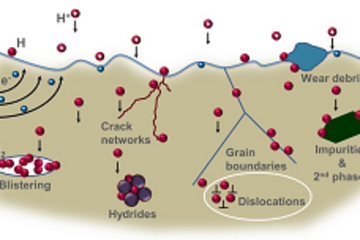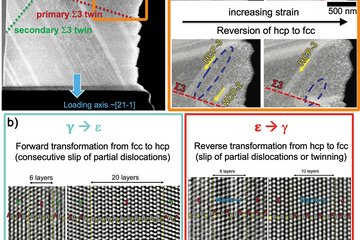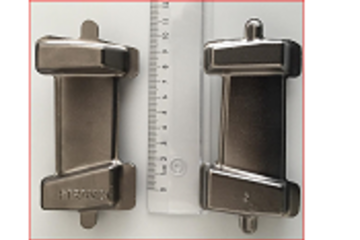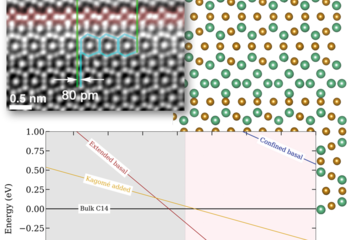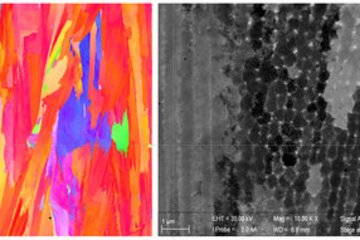All genres
1.
Journal Article
Unveiling high-temperature flow behavior in a high-Mg Al alloy: The role of Mg segregation and grain boundary sliding. Journal of Materials Science & Technology 243, pp. 167 - 180 (2026)
2.
Journal Article
Interfacial segregation of carbon atoms: the competition between grain boundaries and phase boundaries. Scripta Materialia 268, 116842 (2025)
3.
Journal Article
The dual role of boron on hydrogen embrittlement: example of interface-related hydrogen effects in an austenite-ferrite two-phase lightweight steel. Acta Materialia 299, 121458 (2025)
4.
Journal Article
Improving hydrogen embrittlement resistance of martensitic steel via interface B segregation. International Journal of Hydrogen Energy 164, 150954 (2025)
5.
Journal Article
On the anisotropic deformation behavior of a low-density medium manganese steel. Acta Materialia 292, 121060 (2025)
6.
Journal Article
Microstructural features and hydrogen diffusion in bcc FeCr alloys: A comparison between the Kelvin probe- and nanohardness based-methods. International Journal of Hydrogen Energy 102, pp. 1103 - 1115 (2025)
7.
Journal Article
Interfacial boron segregation in a high-Mn and high-Al multiphase lightweight steel. Acta Materialia 283, 120568 (2025)
8.
Journal Article
Segregation at prior austenite grain boundaries: The competition between boron and hydrogen. International Journal of Hydrogen Energy 95, pp. 734 - 746 (2024)
9.
Journal Article
Strong yet ductile steels via a heterogeneous phase transformation strategy. Scripta Materialia 252, 116274 (2024)
10.
Journal Article
Current challenges in the utilization of hydrogen energy-a focused review on the issue of hydrogen-induced damage and embrittlement. Advances in Applied Energy 14, 100168 (2024)
11.
Journal Article
Tuning generalized planar fault energies to enable deformation twinning in nanocrystalline aluminum alloys. International Journal of Plasticity 178, 104018 (2024)
12.
Journal Article
Shearing brittle intermetallics enhances cryogenic strength and ductility of steels. Science 384 (6699), pp. 1017 - 1022 (2024)
13.
Journal Article
The influence of precipitation on plastic deformation in a high Mg-containing AlMgZn-based crossover alloy: Slip localization and strain hardening. International Journal of Plasticity 173, 103896 (2024)
14.
Journal Article
Laser powder bed fusion of crack-susceptible stainless maraging steel undergoing solid-state phase transformations. Acta Materialia 263, 119534 (2024)
15.
Journal Article
Optimizing site-specific specimen preparation for atom probe tomography by using hydrogen for visualizing radiation-induced damage. International Journal of Hydrogen Energy 50 (Part A), pp. 165 - 174 (2024)
16.
Journal Article
On the formation and growth of grain boundary k-carbides in austenitic high-Mn lightweight steels. Materials Research Letters 12 (1), pp. 10 - 16 (2024)
17.
Journal Article
In-situ investigation of the interaction between hydrogen and stacking faults in a bulk austenitic steel. Acta Materialia 262, 119441 (2024)
18.
Journal Article
Physical metallurgy of medium-Mn advanced high-strength steels. International Materials Reviews 68 (7), pp. 786 - 824 (2023)
19.
Journal Article
Microstructure design strategies to mitigate hydrogen embrittlement in metallic materials. Fatigue & Fracture of Engineering Materials & Structures 46 (8), pp. 3060 - 3076 (2023)
20.
Journal Article
Deformation-induced concurrent formation of 9R phase and twins in a nanograined aluminum alloy. Acta Materialia 244, 118540 (2023)




